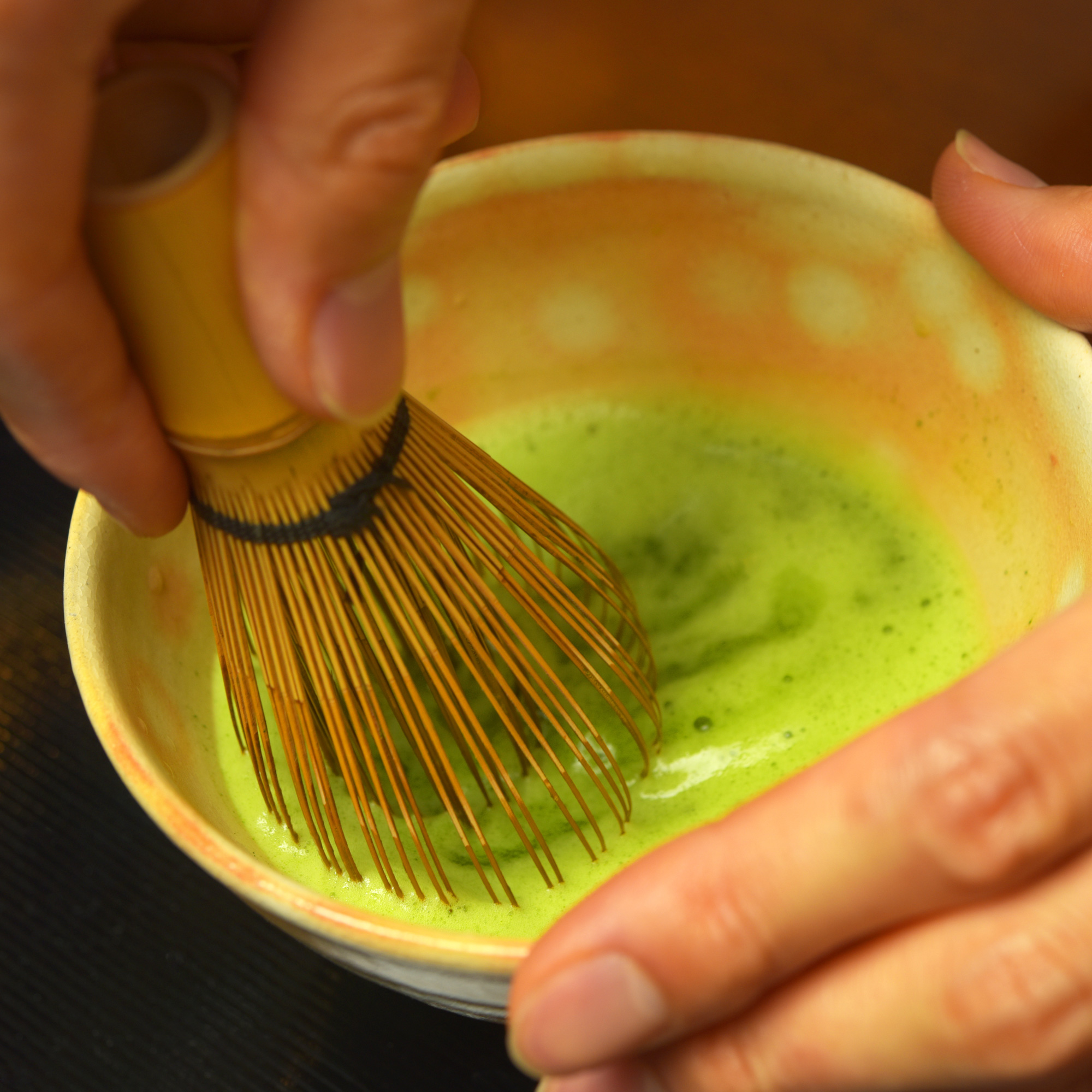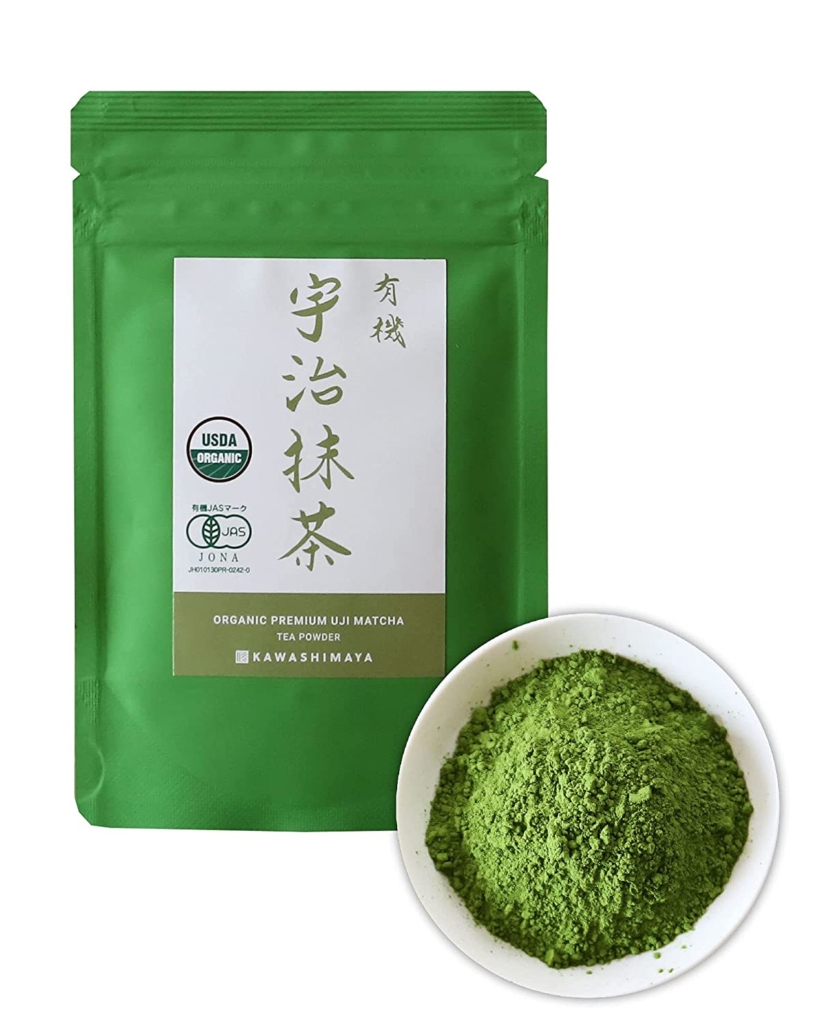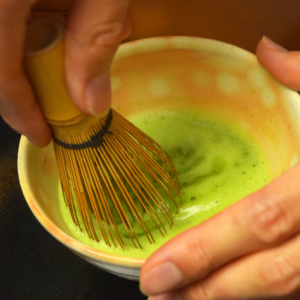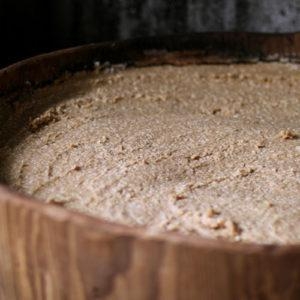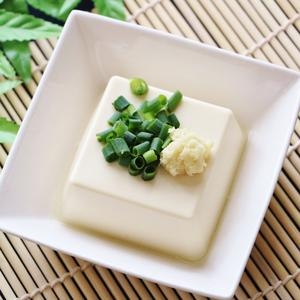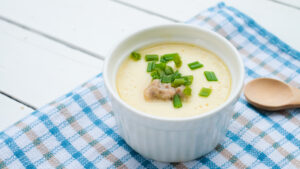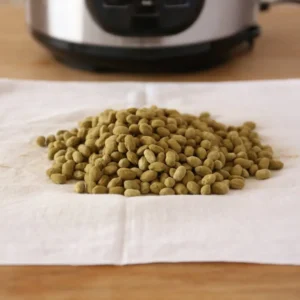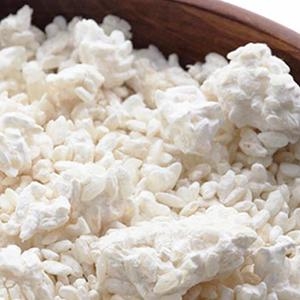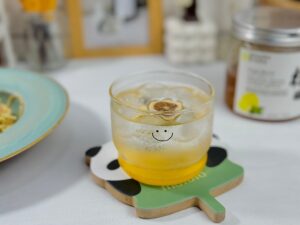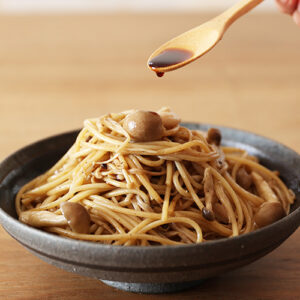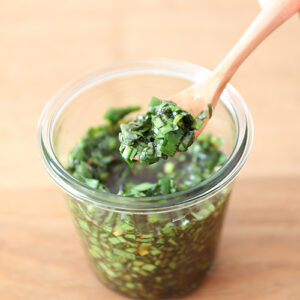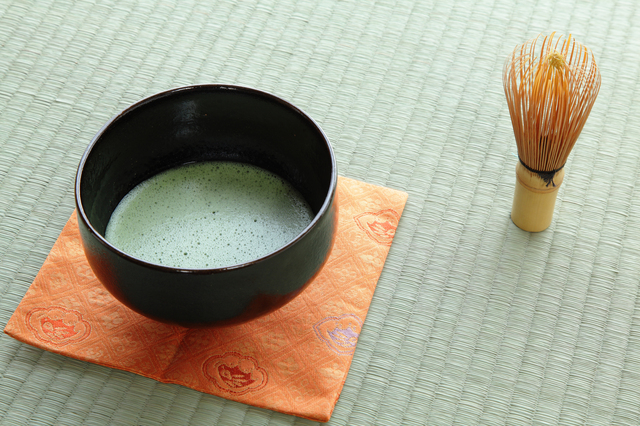
Matcha tea has been around for centuries in Japan’s tea history. But in recent years, matcha tea has become increasingly popular not only because of its taste but because of its benefits for health and beauty effect.
Matcha tea is a finely grounded tea powder of Camellia The green tea plant has been shaded-grown for three to four weeks before harvesting process. This treatment increases chlorophyll production and boosts the amino acid content, resulting a deep and lushy green color.
This article will help to answer all your question regarding matcha tea. We will discover the matcha benefits from recent studies and learn matcha facts that you need to know.
Contents List / Table of Contents
- What is Matcha Tea
- How to Prepare Matcha Tea
- The Difference Between Matcha Tea and Green Tea
- Matcha Tea Health Benefits
- Matcha Grade Differences
- The Japanese Tea Ceremony “Sado”
- Delicious Matcha Tea Recipe You Can Make Easily at Home
- How to Brew Matcha with Traditional Tools
- Matcha Latte Recipe
- Matcha and Banana Smoothie Recipe
- Matcha Pudding Recipe
- Matcha Q&A
- Recommended Products for Matcha Tea
What is Matcha Tea
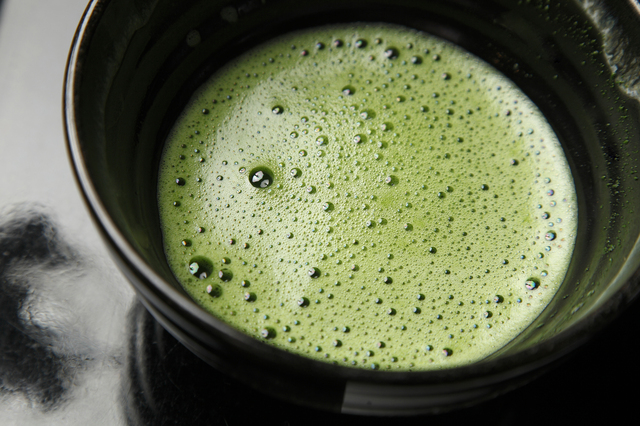
Matcha tea is a finely grounded tea powder of Camellia sinensis plant.
The green tea plant has been shaded-grown for three to four weeks before harvesting process. This treatment increases chlorophyll production and boosts the amino acid content, resulting a deep and lushy green color.
Drinking tea in an adequate amount per day (up to 2-4 cups) is said to help you complete a well-balanced diet. Especially in matcha tea that is a 100% grounded tea leaves, it has more nutrients than other tea.
Lot of people admit that drinking matcha tea is good for your health.
Besides of its pleasant flavor and relaxing effect, consuming matcha tea can help to improve overall health. Later in this article, we will learn about Matcha Tea Health Benefits.
Drinking Organic Matcha Tea is Good for your Health
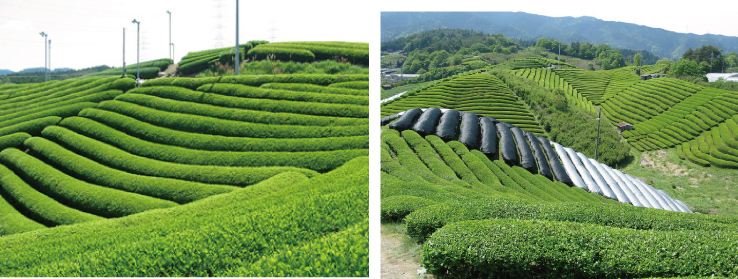
Most tea plantation in Japan uses pesticides. The reason behind that is because tea plant is actually very weak to insects. Also, mass production is needed because tea has a high demand.
Using a pesticide means a tea plantation will have to do spraying for 7 to 8 times a year. Spraying time will take some hours up to 2 full days. That is a terrifying procedure that could affect the worker’s health and people who eat the harvested tea.
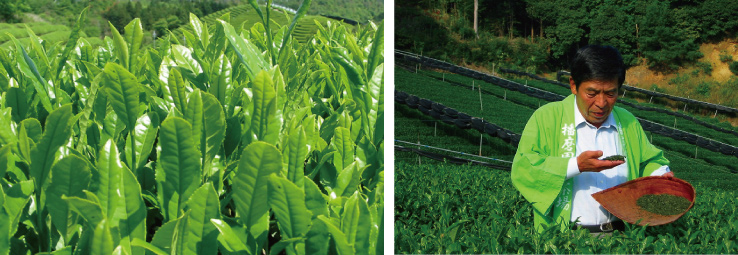
We are consuming matcha tea for our health. But if we consume matcha tea cultivated with pesticide, it is not good for our health.
The matcha tea will lose its benefits.
Because of this, drinking organic matcha tea will be a good choice to maintain your health.
Cultivating organic tea plant is harder and require so much time and effort, such as a large amount of weeding.
Therefore, one of the tea plantation companies in Japan — Harimaen Seicha, put so much effort into producing organic cultivation and pesticide-free matcha tea. Harimaen Seicha is one of few companies in Japan that produce high-quality tea products with JAS certification, NOP (Natural Organic Program) Certification, and EU Organic Certification. They are certainly maintaining their product quality to deliver a healthy and safe matcha tea for their customers.
Enjoy the organic, healthy, and safe matcha tea products from Harimaen Seicha.
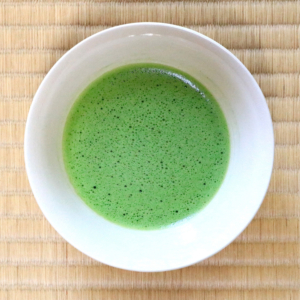
Recommended Matcha Green Tea
How to Prepare Matcha Tea
In preparing matcha tea, you will need some tools to prepare and a method to apply. Perfectly whisked matcha tea will boost its flavor and aroma. Follow these instruction below and master the technique for preparing matcha tea!
Preparing Matcha
What to prepare: Chawan (teacup), Chasen (bamboo matcha whisk), Chashaku (Bamboo teaspoon), Chakoshi (Tea strainer), Teatowel, Matcha Tea.
Matcha tea is easy to make. First, put about 1 gram of Matcha Tea powder in Chakoshi (Tea strainer) and strain it to the teacup to avoid lumps. Pour about 30 ml of 70°-80° C hot water to the teacup, and whisk well using Chasen (bamboo matcha whisk).
How to Whisk Using Chasen
1. First, do not put the Chasen on the bottom of the teacup. Let it moves and whisks quickly to make bubbles.
2. If the bubbles on the surface of the cup are stroked with Chasen, the large bubbles will become smaller and smaller.
3. Lastly, move the Chasen as if writing the Japanese Katakana character of “no” (の) while stroking the foam at the surface of the teacup. Shift it to the center gently, and slowly pull it out of the teacup.
Source: Harimaen Seicha’s Official Website
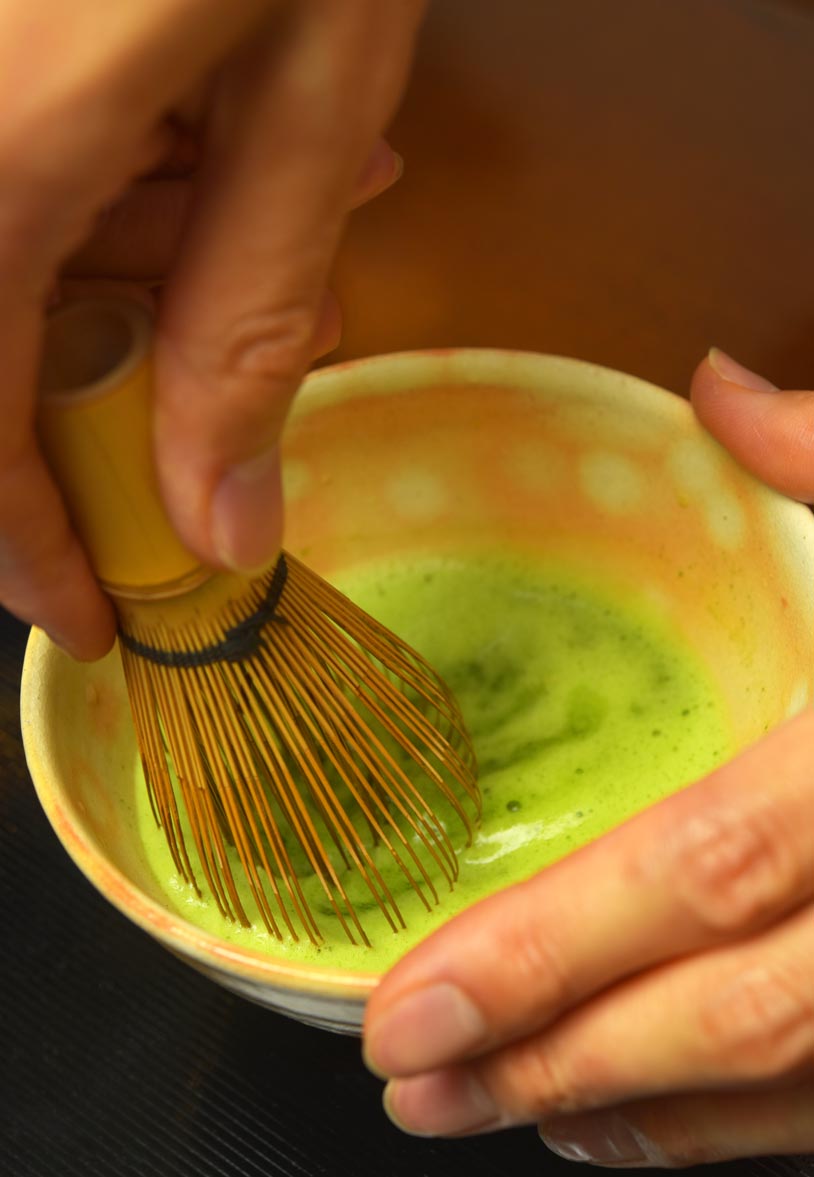
How many cups of matcha can you drink every day?
It is said that 2 cups (2g of matcha powder) to 4 cups of matcha is the adequate amount of matcha to drink every day.
If matcha is excessively consumed, it may adversely cause several health complications.
Possible Matcha Side Effects
Those with caffeine sensitivity and a pregnant woman may want to limit their matcha consumption, because of its caffeine content. High dose of caffeine in the body may cause headaches, insomnia, diarrhea, and irritability.
It is recommended to avoid drinking matcha before going to sleep if you have low caffeine tolerance. The caffeine level in matcha may make you harder to fall asleep. It may lead to nighttime peeing that could disturb your sleep.
Due to different needs in every individual, please consult further with your doctor to make sure your appropriate amount for matcha consumption.
The Difference Between Matcha Tea and Green Tea

This two food seems very similar, so it’s a natural thing that at the first time everyone could not really know the difference.
Matcha tea and green tea comes from the same plant, that is Camellia Sinensis. But they do have differences in flavors, texture, colors, and preparing methods.
Here are the differences between matcha tea and green tea.
| Matcha Tea | Green Tea |
|---|---|
| Matcha comes in the form of powder which appears brighter green than green tea leaves. This bright, vibrant color comes from the high levels of chlorophyll.
Matcha is actually 100% green tea leaves that have been ground into a fine powder. Because of that, the nutrients that come from 1 cup of matcha equal to 10 cups of green tea. It comes only from the finest green tea leaves. The leaves are grounded into matcha powder. So the texture of matcha powder is smooth, like a talc. The taste of matcha is more rich, strong, ellegant, and bitter than green tea leaves. It is recommended to mixed 1-2 tsp of matcha powder with 60ml of water in 70°C in one serving. Whisk it well using chasen (bamboo matcha whisk). In Japan, we usually drink matcha together with Japanese traditional sweets (和菓子). |
Green tea usually come in the form of tea bag or tea leaves. While the color appears to be more brown and dull than matcha.
Green tea leaves are the dried, crushed-up leaves from the Camellia Sinensis plant. They are always harvested by hand. The green tea leaves feel gritty like sand. Making green tea is relatively easier than matcha. You just need to boil the leaves into hot water between 70°C to 90°C. The temperature of the water can effect the taste and aroma of the tea. 70°C water will deliver pleasant flavor and minimized the bitterness. While 90°C can provide stonger aroma of the tea. So you can choose the temperature at your own preference. Still, drinking green tea is good for health and beauty effect. |
Matcha Tea Health Benefits

In recent years, matcha tea has become increasingly popular not only because of its taste but because of its benefits for health and beauty effect. Matcha is rich in antioxidants, active amino acids, and small amounts of vitamins and minerals.
Because matcha is actually 100% of green tea leaves that have been grounded into fine powder, it has lots of nutrients from other teas. In fact, the nutrients in one cup of matcha equal to 10 cups of green tea.
Here are some benefits from consuming matcha.
Health Benefit 1 Packed with Antioxidants

Matcha is rich in catechins, particularly epigallocatechin gallate (EGCG) — one of the plant compounds in tea that act as natural antioxidants.
The antioxidants may prevent damage that caused by free radicals, therefore consuming matcha tea could lower the risk of several chronic diseases for your body. A study strongly propose matcha tea as a natural compound that could help to overcome cancer cell resistance to chemoteraphy.
Matcha tea contains 137 times more antioxidants than green tea. That is because every one cup of matcha tea was made with 1 gram of green tea leaf powder containing 143 mg total catechins.
Health Benefit 2 Gives Relaxation Effect

According to studies, the active amino acid (L-theanine) contained in matcha tea induces relaxation effect. L-theanine stimulates the alpha brain waves that could create deep mental relaxation.
This amino acid is responsible to give the umami flavor that becomes the characteristic flavor of tea.
Health Benefit 3 May Help You to Lose Weight

A study shows that drinking 4 cups of matcha tea in 24 hours can enhance fat oxidation by 18% during brisk walking in healthy females. Every one cup is made with 1 gram of matcha tea powder.
This proves that 4 cups of matcha tea’s composition is sufficient on the metabolic responses during exercise.
So consuming matcha to start your day might make your workouts and diets more effective.
Health Benefit 4 Gives You Energy

Chlorophyll is a natural green pigment contained in all green parts of plants, including matcha tea.
As chlorophyll creates energy for the plant, they can provide energy to your body.
The energy does not get absorbed in the body but travels through digestive track instead. So it makes you fuller longer and prevent overeating.
Matcha Grade Differences
To make your matcha drinking experience more enjoyable, let’s learn about matcha grade differences.
In general, matcha divided into 2 grades: ceremonial grade and culinary grade. Every grade of matcha has a different purpose, taste, color, texture, smell, and usage.

Left: Ceremonial Grade Matcha, Right: Culinary Grade Matcha
Now when you look at the picture, you already can determine which grade the matcha is with its looks.
Let’s discover the other differences with the explanation below!
1. Ceremonial Grade Matcha
The highest quality of matcha that is usually sipped for the traditional Japanese Tea Ceremony is called “Sado”. Ceremonial grade matcha is made from the youngest tea leaves with no veins and stems. Resulting in the most vibrant green color. The price is the most expensive of all grades.
Ceremonial matcha is made exclusively for whisking it with hot water and drinking as it is. It has the finest, talc-like texture. The taste is very fresh and creamy with its natural sweetness.
2. Culinary Grade Matcha
This grade is mostly used for cooking food, beverages, and baking. Even so, you can enjoy it for drinking too. It’s still matcha: the high-quality tea, after all. The price is cheaper than the ceremonial grade.
It may look less vibrant, but still noticeably green color. The taste is more robust, and some have a slight bitterness. When you use it for cooking, it’s best to mix culinary grade matcha with sweeteners to enhance the flavor.
Culinary grade matcha can be broken down again into 5 grades. The lower the grade of matcha, the taste will more bitter with less vibrant green color. There are:
- 1. Premium Grade (close to ceremonial grade, but with lower price).
- 2. Cafe Grade (offer strong flavor which perfect for cooking and baking).
- 3. Ingredient Grade (good match for recipes with milk and other dairy products).
- 4. Kitchen Grade (mostly economical brand with strong astringent flavor).
- 5. Classic Grade (vertisale matcha that has a strong and distinct flavor).
The Japanese Tea Ceremony “Sado”
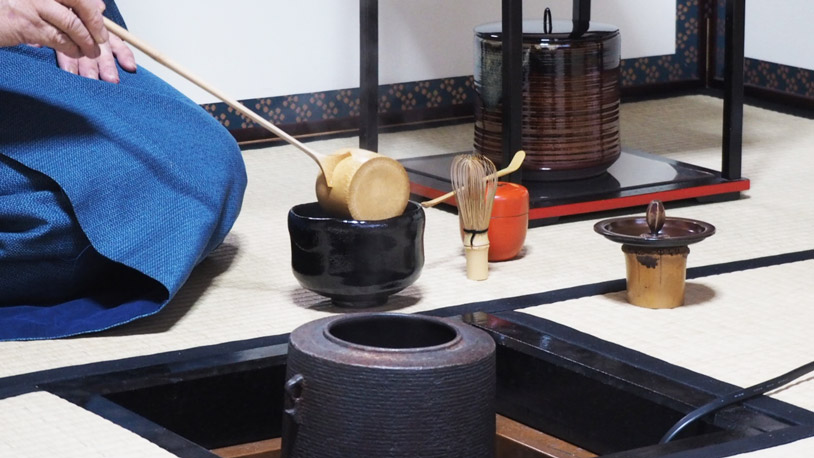
The traditional Japanese Tea Ceremony is called sado (茶道, “The Way of Tea”) or chanoyu (茶の湯). It is the ceremonial way to preparing Japanese matcha tea, together with traditional Japanese sweets (和菓子, wagashi) for the guests to enjoy the hospitality, atmosphere, and aesthetics that the host has to offer.
This tradition was brought back from China by a Japanese monk, Eisai, around the end of the 12th century for religious purposes. In modern days, the ceremony is practiced as a hobby, and there are someplace where tourists can experience it as well.
The sado usually done in a traditional room called chashitsu or held with picnic-style in outdoors called nodate. The event includes several procedures with using some tea utensils and various decorations. It can last up to 4 hours depending the formality of the event.
Tea Utensils
Tea utensils is called chadōgu, it is available in different styles and patterns that displayed in different events or seasons.
There are the following components:
- ● Tea caddy (茶入, Chaire): the usually tall and thin ceramic lidded container for making tea.
- ● Hemp cloth (茶巾, Chakin): small cloth to wipe the tea bowl.
- ● Tea bowl (茶碗, chawan): available in many varieties of sizes and styles.
- ● Tea whisk (茶筅, chasen): the tool to mix the powdered tea with hot water. Made with bamboo.
- ● Tea scoop (茶杓, chashaku): small scoop carved from bamboo or ivory. This tool is important to get the correct proportion of matcha in every bowl.
- ● Ladle (柄杓, hishaku): long bamboo ladle to transfer hot water from iron pot to tea bowl.
- ● Iron pot (釜, kama): pot to heat up the water for making tea, etc.
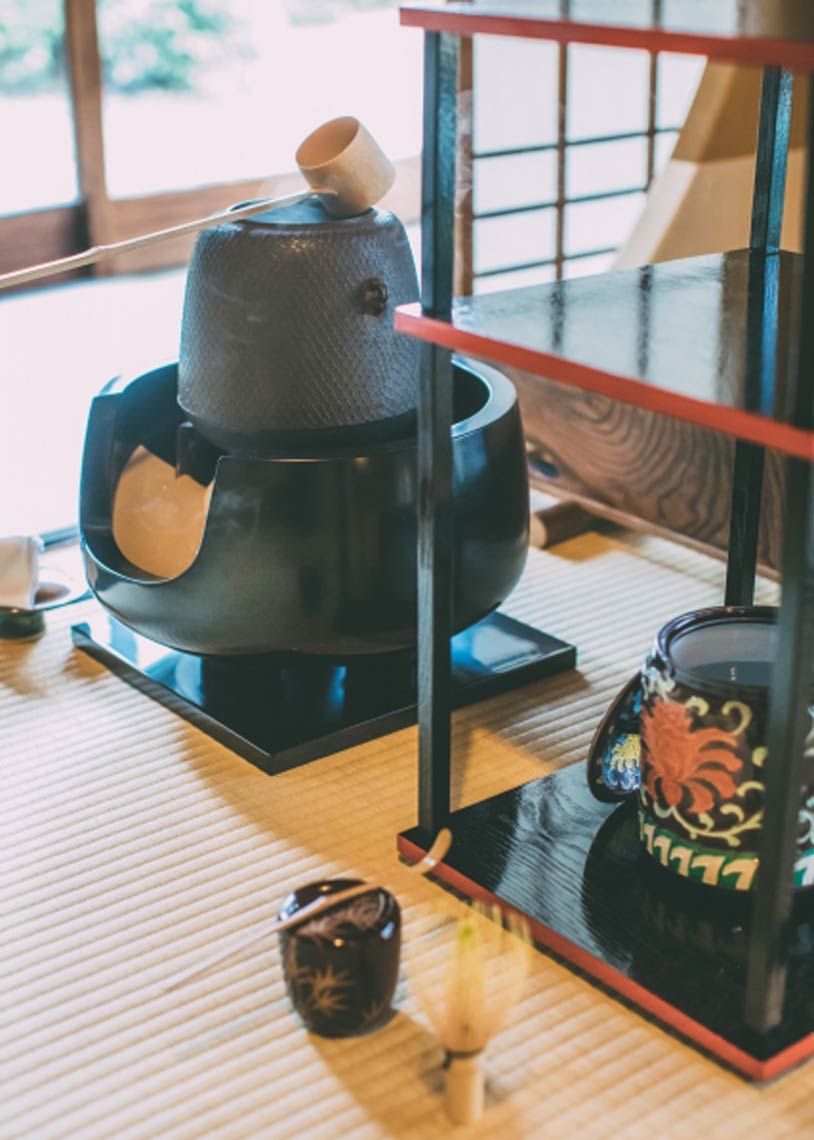
Etiquettes for Sado
Because it is a traditional ceremony, wearing a kimono is highly appreciated. If you can’t make it, please wear appropriate clothing.
Consider to be on time, and always show your respect by doing what the host says to the guests.
Please focus on the ceremony and enjoy the atmosphere given around the room. The host always carefully chooses the decoration and tea utensils for the ceremony.
After seated in the correct order, wagashi is served for every guests starting from the first order guest (Shokyaku) to the last order guest (Tsume). These sweets are not to be eaten before you recieved the bowl of matcha tea.
The wagashi will balance the bitter taste of the matcha, making the perfection of the flavor.
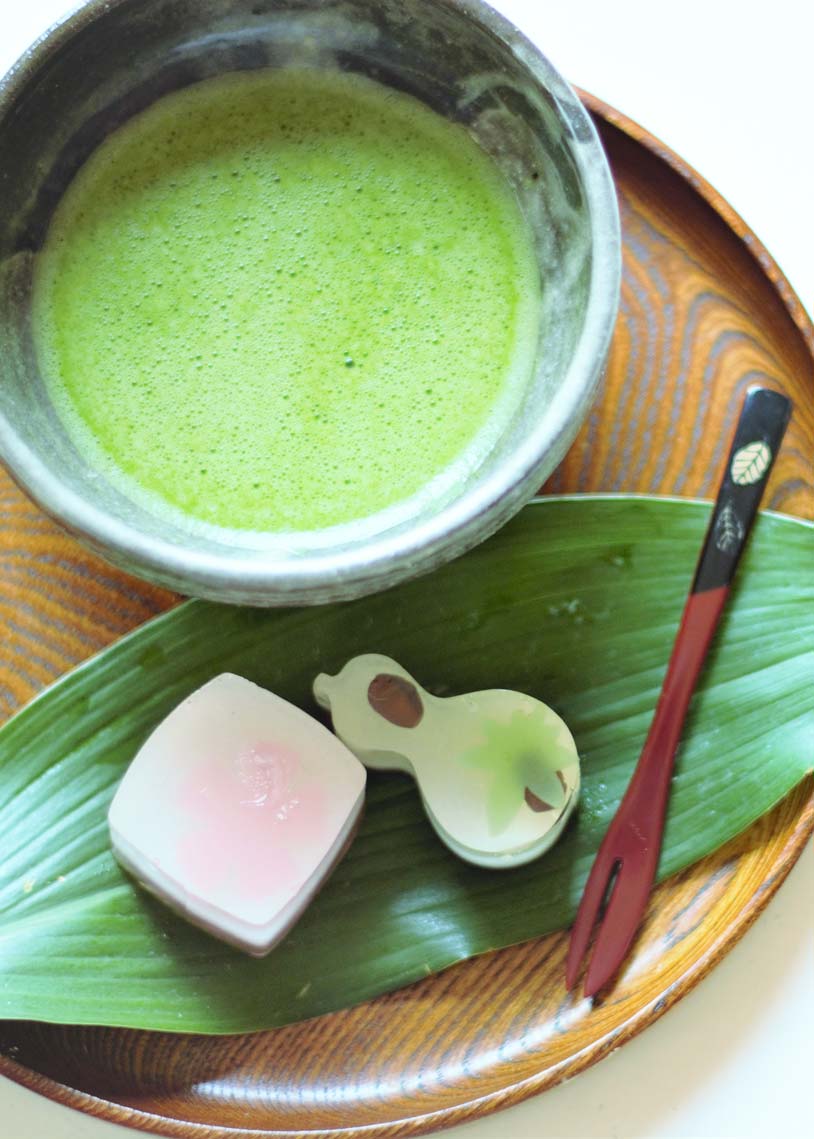
If you are not sure about the know-how of sado, let’s ask another guest or the person in charge before the ceremony begins. There are many other etiquettes that are better to follow.
Sado experience holds the unforgettable experience you can only get in Japan. It is a must-try experience, both for Japanese and tourists. Be sure to experience it when you visit Japan!
Delicious Matcha Tea Recipe You Can Make Easily at Home
When you have matcha tea at home but you don’t know how to use it?
In this article, we will tell about 3 delicious recipes for matcha tea that you can make easily at home. These are also my favorite matcha recipes, such as matcha latte, matcha and banana smoothie, and matcha pudding.
Quick, simple, and delicious. Be prepared to fall in love with matcha’s deliciousness!
How to Brew Matcha with Traditional Tools
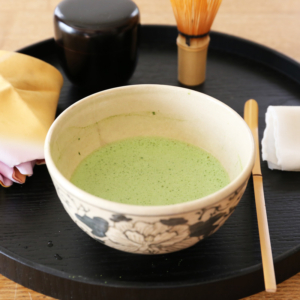
How to Brew Matcha with Traditional Tools
Equipment
- Tea pot
- Tea bowl (Chawan)
- Tea spoon (Chashaku)
- Bamboo whisk (Chasen)
- Clean cloth/towel
Ingredients
- 1.5 g Organic Matcha Tea Powder (0.05oz)
- 70 ml Hot Water around 80°C/176°F (2.4 fl oz)
Instructions
- Pour hot water into the tea bowlThis time, do not put the matcha powder first. The first step is to warm up the bowl.
- Dip the bamboo whisk in the hot waterBy dipping the bamboo whisk in hot water, the tip of the whisk will become soft and it will be easier to use.
- Discard the hot water from the bowl
- Wipe the bowl with clothIf there is water left in the bowl, it will be harder to make tea. So wipe it carefully.
- In case if the matcha powder is clumpy when you take it out of the bag, use a small strainer to sift the matcha
- Add 1.5g (0.05oz) of matcha powder into the bowl
- Pour 70ml (2.4 fl oz) of hot water into the bowlThe water temperature should be about 80°C/176°F.
- Use the bamboo whisk to stir the teaMove the whisk front and back fastly until foams form on the surface.
- When whisking, remove the big foam from the tea and only remain the fine foamsThe fine foams on the surface will make matcha more delicious.
- Delicious matcha is ready to be served
Notes
Matcha Latte Recipe
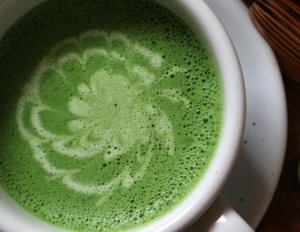
Matcha Latte
Equipment
- Tea cup
- Chasen (bamboo matcha whisk) to mix the matcha tea powder
- Sieve
Ingredients
- 2 tsp Organic Matcha Tea Powder (approx. 2 g / 0.07 oz)
- 60 ml Hot Water around 80°C/176°F (2 fl oz)
- 170 ml Steamed milk (5.8 fl oz)
- 1 tsp Honey (optional)
Instructions
- Sift matcha tea powder into a cup.
- Mix matcha tea powder with hot water in the tea cup and stir the matcha quickly with chasen. Whisk until nice and frothy.
- Pour 170ml (5.8 fl oz) of steamed milk into the cup.
- Sweetened it with honey (optional).
- Matcha Latte is ready to serve.
Notes
Matcha and Banana Smoothie Recipe
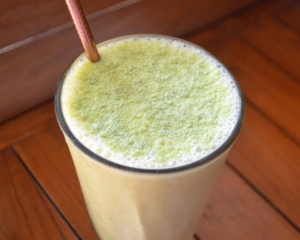
Matcha Banana Smoothies
Equipment
- Glass Jar
- Blender
Ingredients
- 1 tsp Organic Matcha Tea Powder (approx. 1.5 g / 0.05 oz)
- 1 Frozen Banana sliced
- 240 ml Milk (your choice) (8.1 fl oz)
Instructions
- Pour all ingredients (matcha tea powder, sliced frozen banana, and milk) into a blender.
- Blend the ingredients until smooth.
- Serve in a glass and top with a sprinkle of matcha tea powder.
- Enjoy the smoothie!
Notes
Matcha Pudding Recipe
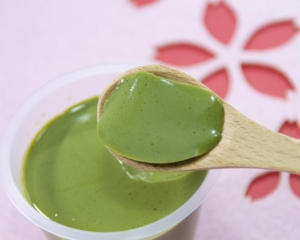
Matcha Pudding
Ingredients
- 2 tbsp Organic Matcha Tea Powder
- 300 ml Fresh milk
- 2¼ tbsp Gelatin powder
- 2 tbsp Hot water
- 40 g Sugar
- Toppings (whipped cream/red bean paste (anko)/tapioca bubbles) {optional}
Instructions
- Soak and soften the gelatin with 2 tablespoons hot water in a small bowl.
- Put 2 tablespoons of organic matcha tea powder into another small bowl.
- Pour the whole milk (300 ml) in a small pan under medium heat, bring it to almost boil. When you see the small bubbles around the edge of the pan, turn off the heat.
- Add 40 g of sugar to the pan of milk and mix well until dissolved.
- Add 3 tablespoons of milk mixture into the matcha tea powder. Whisk it with Chasen until smooth with no lumps of matcha tea powder.
- Pour the matcha powder mixture into the milk mixture. Whisk and blend it all together.
- Add the gelatin liquid into the mixture and whisk well.
- Strain the matcha mixture to prevent unnecessary lumps and let cool. Once the pudding has solidified, add your own toppings to decorate. Serve chilled.
Recommended Products for Matcha Tea
Matcha Q&A
- What is matcha tea?
- Matcha tea is finely grounded tea powder of Camellia Sinensis plant that has been shaded-grown for three to four weeks before the harvesting process.
Because it’s a 100% grounded tea leaves, the nutrient of one cup of matcha equals to 10 cups of green tea.
- How many cups of matcha can I drink every day?
- 2 cups (2g of matcha powder) to 4 cups of matcha is the adequate amount of matcha to drink every day.
- Why matcha is good to consume?
- Matcha is rich in antioxidants, active amino acids, and small amounts of vitamins and minerals. Matcha’s content offers several health benefits, such as:
- 1. Packed with antioxidants, lower the risk of several types of cancer
- 2. Gives relaxation effect
- 3. May help you to lose weight
- 4. Gives you energy
- Is Matcha good for weight loss?
- Drinking an adequate amount of matcha is believed to enhancing weight loss while having a well-balance diet and daily exercise.
- Matcha is classified to ceremonial grade and culinary grade matcha. Is there any difference between them?
- Ceremonial grade matcha used for traditional Japanese Tea Ceremony, “Sado”. It is characterized by vibrant green color, with a talc-like texture. The taste is fresh, creamy and has a natural sweetness.
Culinary grade matcha is best for cooking and baking. But you can drink it as it is too. The lower the grade, the taste will more bitter with less vibrant green color.
- What is “Sado” The Japanese Tea Ceremony? Can I attend to it?
- Sado is the ceremonial way to preparing Japanese matcha tea, together with traditional Japanese sweets (和菓子, wagashi) for the guests to enjoy the hospitality, atmosphere, and aesthetics that the host has to offer.
Yes, you can attend to sado at a place when they can invite tourists as a guest. Be sure to experience it when you come to Japan!
Recommended Products for Matcha Tea
Organic Matcha Tea is definitely better for your health. They are more difficult to cultivate, therefore you can feel the quality difference between organic matcha and regular matcha.
Harimaen Seicha is one of few company in Japan that produce a high quality tea products with JAS certification, NOP (Natural Organic Program) Certification, and EU Organic Certification.
Find their products in Kawashima The Japanstore and experience the taste of high quality matcha tea.
Buy On Amazon USA
Organic Matcha Green Tea Powder, Premium Ceremonial Grade First Harvest from Uji Kyoto – USDA & JAS Certified, Radiation Free, Made in Japan by Kawashimaya 1.06oz (30g)
The highest-grade matcha available, perfect for making traditional matcha with a divine taste. Enjoy the 100% grounded first harvest green tea with vivid green, authentic, rich & mellow taste with no astringency. Organic certified & tested for radiation-free tea. Originated from Uji, Kyoto.

